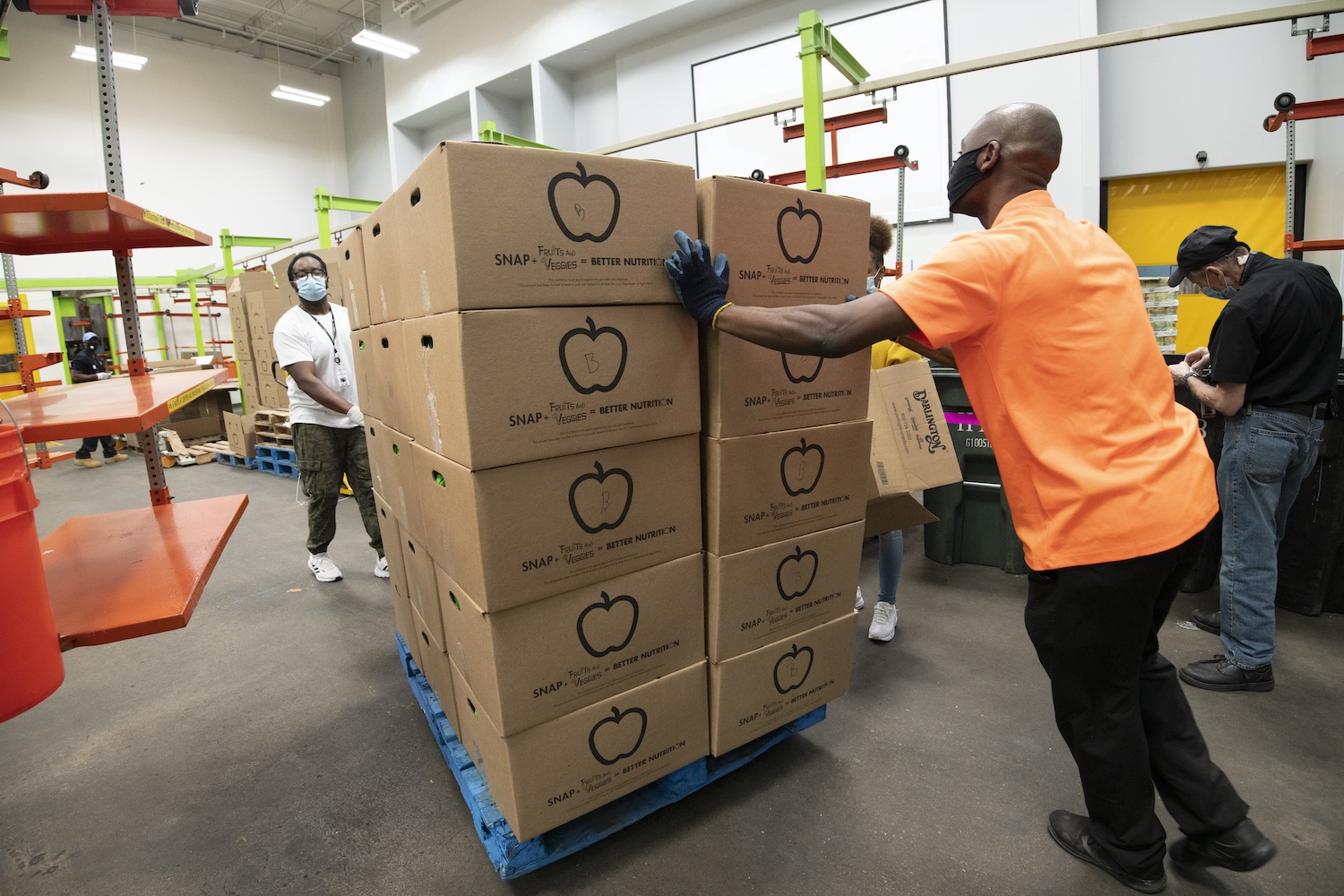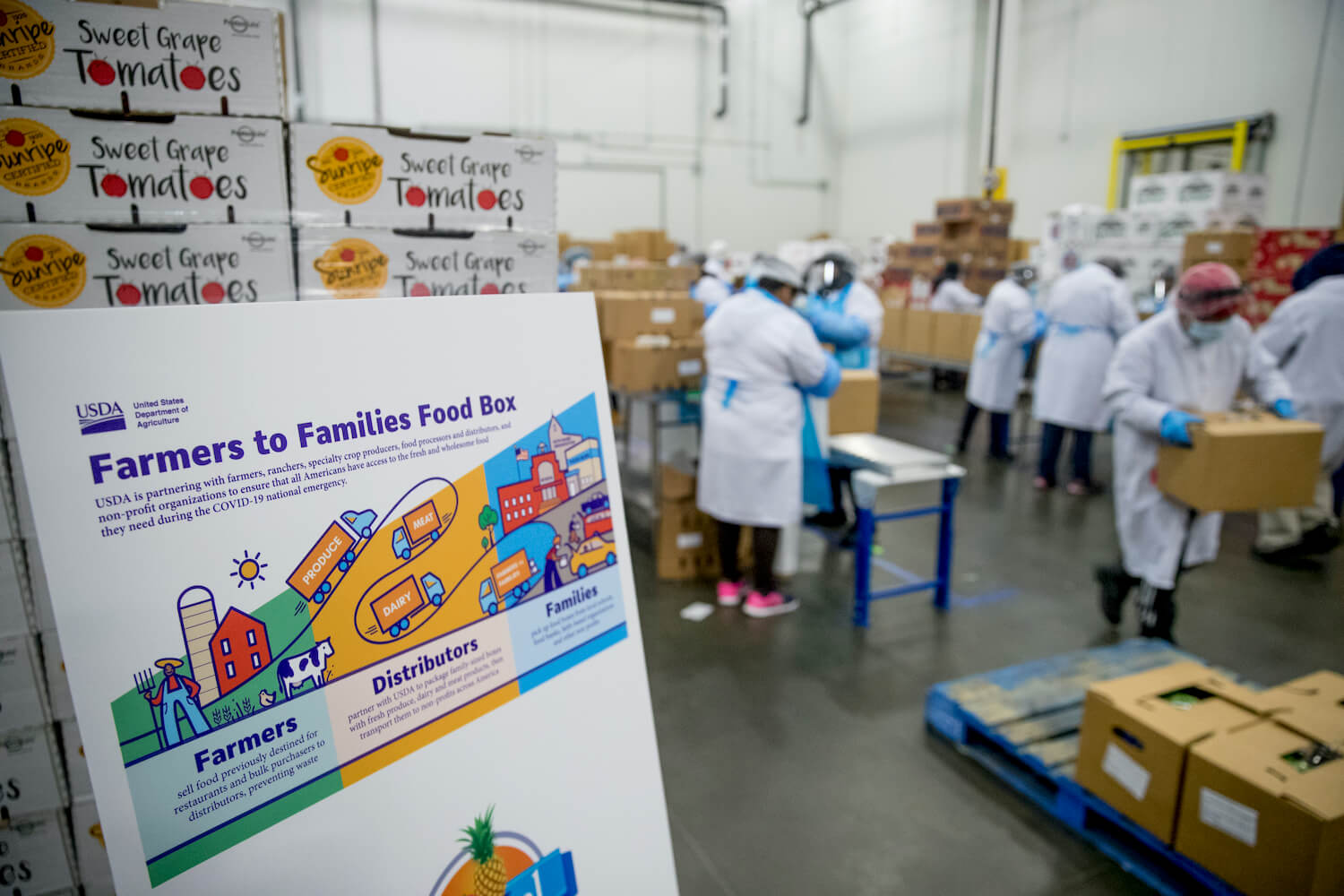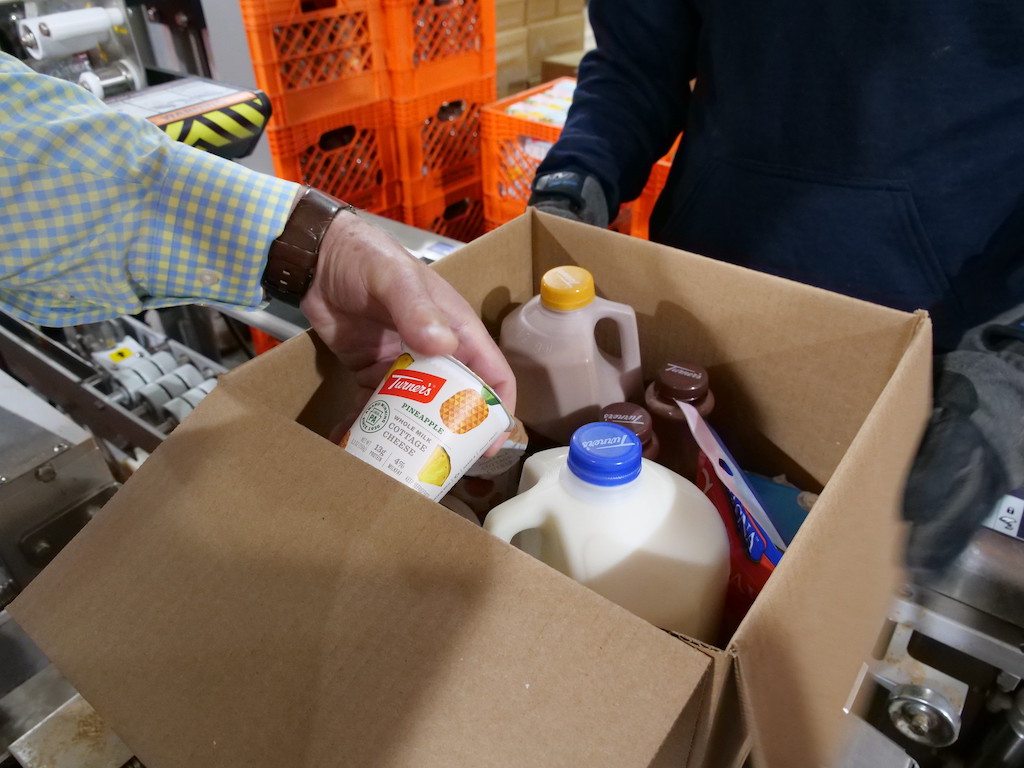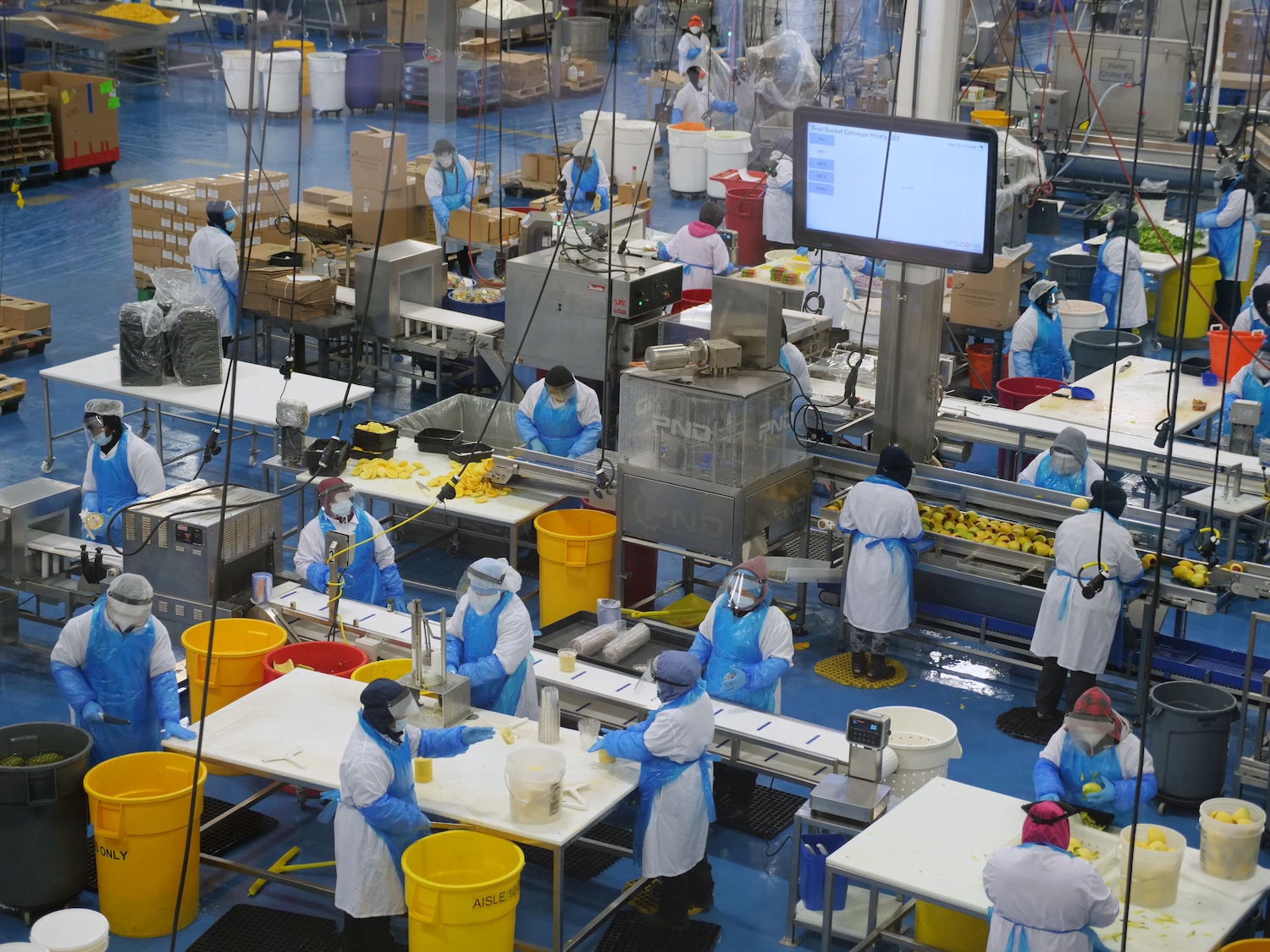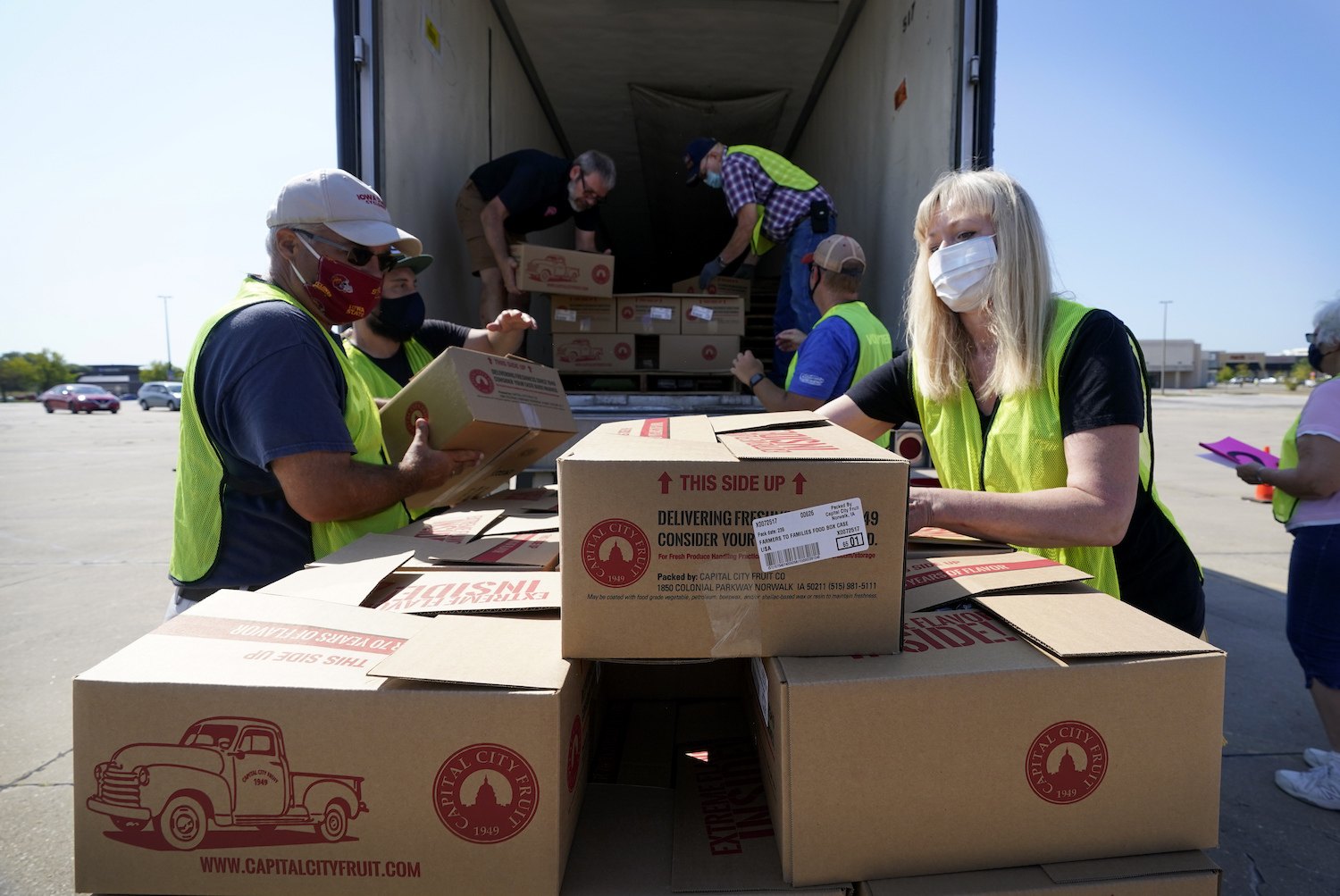
AP Photo/Charlie Neibergall
USDA said that a recent overhaul was supposed to shore up the much-maligned initiative. But farmers say it’s left them with acres of crops they can’t afford to harvest.
Update, October 23, 2020, 1:30 p.m.: After this story was published, USDA announced it would extend the Farmers to Families Food Box program to run through December 31, 2020. Previously, the agency had indicated that the initiative would end on October 31. We have updated this post to reflect the changes.
Secretary of Agriculture Sonny Perdue has repeatedly called the Farmers to Families Food Box program—the Trump administration’s flagship hunger relief initiative during the pandemic—a “win-win-win” that benefits farmers, distributors, and food-insecure families in one fell swoop. But despite being prominently featured in the program name, farmers are saying that its most recent round has all but shut them out.
Launched in mid-May, the food box program was billed as a way to help farmers and distributors redirect gluts of unsold produce, dairy, and meat to food pantries and food banks. The process was supposed to be simple: The Department of Agriculture (USDA) would pay selected contractors to package and deliver boxes of domestically produced food to anti-hunger organizations as they faced unprecedented surges in demand.
A&H Farm in Manhattan, Kansas, was one of those contractors. In May, during the program’s first round, the 30-acre vegetable and livestock operation was given a $480,000 contract to put together 12,000 produce boxes. Though this was one of the smaller awards that USDA had issued, owner Andrea DeJesus thought it could be “life-changing.” She said that it helped to patch over business lost in the pandemic—not just for her farm, but for multiple neighboring operations from which she bought additional produce, as well.
“We’ve planted lots of stuff during the summer months to carry us through to provide boxes in September, October, November, and December. So we have lots to produce now that can’t be used.”
In June, A&H was awarded a round two extension worth $640,000 to deliver 16,000 additional boxes through July and August. With the program originally set to run through the end of the year, DeJesus decided in the summer to begin planting crops to harvest for projected contract extensions in the fall. This wasn’t an unreasonable expectation: USDA had previously indicated that extensions would be granted based on performance, and A&H had fulfilled 100 percent of its first two contracts, according to invoice details obtained by The Counter through public records requests.
“We got round one, we got round two, we were told we were doing a great job,” DeJesus said in an interview.
But in early September, DeJesus’s third round application was rejected. An email from USDA reviewed by The Counter stated that DeJesus’s application was “incomplete.” When DeJesus asked for clarification, a USDA representative directed her to the food box program description. DeJesus submitted a follow up application and is still awaiting a response. In the meantime, she’s looking at about 30 acres of winter squash, cabbage, potatoes, and onions for which she needs to find new buyers. While USDA had never guaranteed extensions to its food box contractors, the nature of seasonal farming requires growers to plant crops multiple weeks in advance to meet projected future needs.
“We’ve planted lots of stuff during the summer months to carry us through to provide boxes in September, October, November, and December,” she said. “So we have lots to produce now that can’t be used.”
“Now we sit with 250,000 pounds of vegetables [that] we can’t afford to harvest because we don’t have a place to go with them.”
A&H Farm isn’t alone. Multiple former contractors told The Counter that they were caught off guard by USDA’s decision to sever their food box contracts with little explanation. Lee and Bob Jones, co-owners of Chef’s Garden farm in Huron, Ohio, say that they had planted more than 250,000 pounds of produce in the summer to supply to the food box program this fall and winter. Before the pandemic, Chef’s Garden sold produce to high-end restaurants; this program, the Jones’ told me, helped to sustain the farm when that business evaporated. Chef’s Garden was awarded both a first round contract and a second round extension, and the Jones’ said that they were never flagged for any issues.
[Subscribe to our 2x-weekly newsletter and never miss a story.]
“We anticipated having that next round of contract and planted accordingly,” said Bob Jones. “And so now we sit with 250,000 pounds of vegetables [that] we can’t afford to harvest because we don’t have a place to go with them.”
While the lion’s share of food box dollars went to distributors in rounds one and two, a handful of farmers could still count themselves among the program awardees. This time around, growers appear to have been all but completely cut out of the equation. The agency whittled its previous list of 200 contractors to a group of 54 consisting mostly of distribution-based companies. The biggest contract, valued at $114 million, went to food service giant Sysco.
In an early October letter to Secretary Perdue, a group of 50 members of Congress expressed concern that round three changes left many food banks struggling to find food boxes, while leaving last-mile delivery issues unresolved.
“If you’re going right to the farm with the money and you’re going to the people with the product, you’re cutting out the middleman,” said William Dellacamera, owner of Cecarelli Farms, a former contractor that didn’t get a third round extension. “You’re going to get a better package out of that. Now the money goes to the middle man.”
In an email, a USDA spokesperson said that the agency awarded its third round contracts “based on the pricing submitted for the delivery locations proposed, box content, last mile delivery plans, means testing compliance, and support of small and local/regional food systems.” The spokesperson also said that the agency made substantial third round changes to ensure more geographically equitable distribution of aid—an issue that anti-hunger groups had raised during the summer.
But there are indications so far that these changes haven’t necessarily made things run more fairly. In an early October letter to Secretary Perdue, a group of 50 members of Congress expressed concern that round three changes left many food banks struggling to find food boxes, while leaving last-mile delivery issues unresolved.
“If you’re going right to the farm with the money and you’re going to the people with the product, you’re cutting out the middleman.”
“[Food] banks and distributors alike were startled to learn that as many as half of the previous contracts were not renewed, leaving food banks scrambling to find new partners, despite weeks of careful planning to ensure round three was efficiently executed,” they wrote. “As a result of the changes…families will be left struggling to access food resources.”
This is the latest in a long series of concerns by stakeholders that the program has been mishandled: Previously, the food box initiative raised eyebrows for overpaying contractors, underdelivering in many regions, and being used by religious groups to proselytize. Secretary Perdue has also been fined for violating the Hatch Act at food box informational events, while food banks have criticized the President for using it to distribute self-promoting flyers.
Taken together, these criticisms suggest that the food box program is suffering under the weight of trying to resolve too many issues in a single move. After all, what a farmer might consider a “win” differs from what a distributor considers a “win,” differs from what a food bank or a hungry family considers a “win.”
At a virtual event in late September, Secretary Perdue called the program a “miracle.” Having said that, he also announced that it was time to wrap it up: “We want to let the market work and get back to normal.” Then, on Friday, October 23—about a week before the program was slated to end—USDA announced that it would replenish funding by $500 million and extend distribution through the end of 2020.


